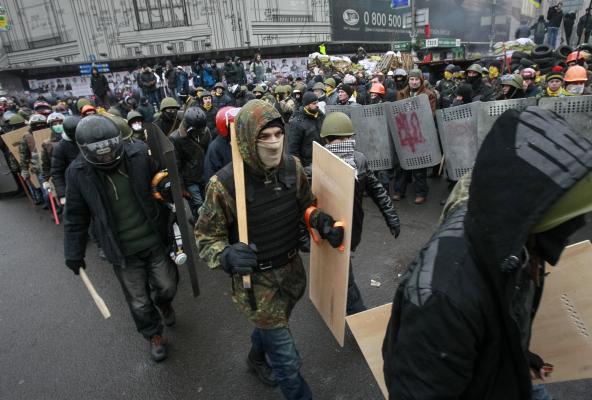Sarajevo/Tuzla, Reuters—Bosnia appeared on Saturday to draw back from three days of unprecedented unrest over unemployment, political paralysis and corruption that for some brought back painful memories of the Balkan country’s 1992-1995 war.
Small protests were held in the capital, Sarajevo, and in northwestern Bihać, where protesters threw stones at the home of the head of the cantonal government.
But there was little sign of the kind of rioting that has left hundreds of people injured, most of them police officers.
In Tuzla, epicentre of the demonstrations, dozens helped clear debris from the gutted building of the local government.
“I’m glad we did it,” said Sanela Fetic, an unemployed 35-year-old who took part in both the protests and the clean-up.
“Now we’ll clean up this mess, like we’ll clean up the politicians who made this happen.”
The unrest began on Wednesday in Tuzla, when anger over factory closures in the once-healthy industrial hub turned violent, spreading by Friday to Sarajevo and other towns.
For years, fear of a return to conflict has kept a lid on anger over the dire state of the Bosnian economy and the inertia of a political system in which power is divvied up along ethnic lines.
In Sarajevo, protesters set fire to the Bosnian presidency building and the seat of the cantonal government, with part of Bosnia’s national archive lost in the flames.
The presidency, with its three members from Bosnia’s Serb, Croat and Muslim Bosniak communities, has become symbolic of the division and dysfunction of the former Yugoslav republic.
Sarajevans streamed past the charred buildings. Broken glass crunched under foot and chairs hurled from offices by protesters lay strewn on the ground.
To some, the scenes were uncomfortably reminiscent of the wartime siege of the city by Bosnian Serb forces in surrounding hills, a 43-month bombardment that claimed more than 10,000 of the estimated 100,000 lives lost in the war.
“I’m struggling not to cry,” said Enisa Sehic, 46, an economist. “This is like a flashback to the not so distant past.”
“Let it burn”
The agreement ending the war created a highly decentralized and unwieldy system of government, splitting the country into two autonomous republics joined by a weak central authority.
One half, the mainly Bosniak and Croat Federation, is split again into 10 cantons, each with its own prime minister and cabinet ministers.
The apparatus is hugely expensive and feeds networks of patronage political parties from each side are reluctant to give up.
The former warring sides have little common vision of Bosnia’s future. While Bosniak leaders want greater centralisation, Croat hardliners are pressing for their own entity, while Bosnian Serb leader Milorad Dodik says he sees no future for Bosnia at all.
With governance frequently hostage to ethnic politics, the economy has struggled to keep up with its ex-Yugoslav peers. More than one in four of the Bosnian workforce is jobless.
Failure to reform the constitution to open up high-level state jobs—such as the presidency—to those not from Bosnia’s three main communities has frozen the country’s bid to become a member of the European Union, which neighboring Croatia joined last year.
Some Sarajevans argued that force was the only language their leaders would understand.
“This had to happen. If they were smart, it wouldn’t have,” said 56-year-old Mirsad Dedovic.
“Part of me was sorry when I saw what was happening yesterday. But then again, let it burn.”
The United States, which brokered the 1995 Dayton peace deal, and the EU that Bosnia wants to join, have proven helpless in prodding the country’s divided political leaders toward reform and greater centralization.
On Saturday, the head of the Sarajevo cantonal government, Suad Zeljkovic, joined his counterpart from Tuzla in resigning, Fena news agency reported.
But it was unclear if the unrest would have any greater political consequences, or serve as a wake-up call for the national leadership.
“This is about 20 years of accumulated rage coming to the surface, and it’s very difficult to assess what will happen next,” political analyst Enver Kazaz told the Bosnian daily Dnevni Avaz.
“The protesters come mostly from a generation of youngsters without hope, whose future has practically been taken away from them.”

